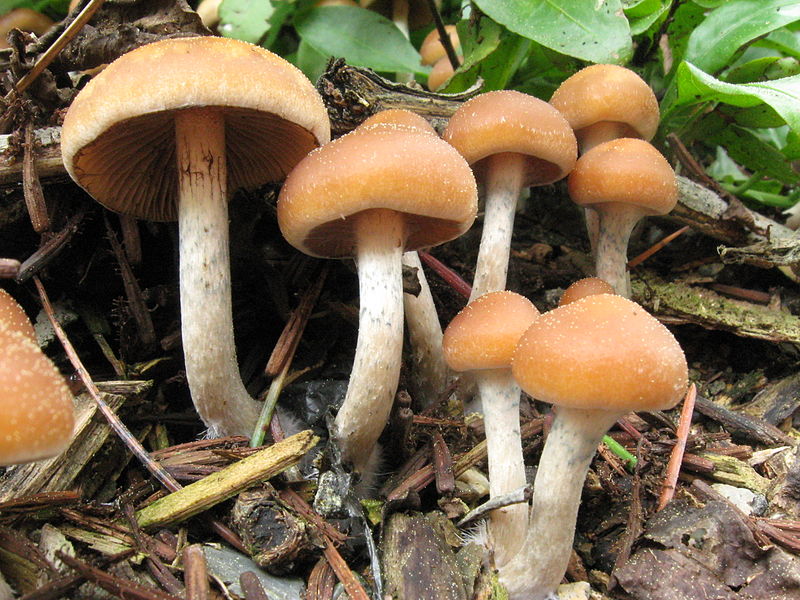 | |||||||
| Psilocybe cyanofriscosa |
Image created by Alan Rockefeller at Mushroom Observer
Hallucinogenic natural products and other substances used
for recreational purposes are often classified as Schedule 1 drugs. An
unintended consequence of this is that legitimate biomedical research
concerning such substances is curtailed, in large measure, due to real or
perceived legal, bureaucratic and societal pressures. Psilocybin, a natural product produced by mushrooms in the genus Psilocybe, is a case in
point. Eugenia Bone, in a 2014 New York Times article, refers to the
marginalization of research into the effects of this psychoactive drug as a
“cultural taboo” and notes that it has taken over four decades for the
pressures against the study of this drug to relax to a point where scientists
feel they can now examine its potential biomedical application.
Recent research by R. R. Griffiths and colleagues (2016) at Johns Hopkins University demonstrated that six months following treatment with psilocybin about 80% of participants (N=51), all of whom were cancer patients, showed "clinically significant decreases in depressed mood and anxiety".
When psilocybin is ingested it is metabolized to psilocin which is the pharmacologically active compound. In addition to causing transient hallucinations and moderately long term relief of anxiety and depression, initial physiological effects of psilocybin may include pupil dilation, changes in heart rate and blood pressure, nausea, tremor and alterations in coordination.
It is reasonable to suggest that much more information concerning psilocybin and psilocin would have been preformed had psilocybin not been classified as a Schedule 1 drug. Nevertheless, there is considerable information concerning the metabolism and action of these substances. Especially interesting is the substantial structural resemblance of psilocybin and psilocin to the natural neurotransmitter serotonin. Indeed many of the effects of psilocybin and psilocin are due to their interactions with serotonin receptors.
References
Bone, Eugenia (New York Times, Sunday Review Nov. 29, 2014)
Griffiths, R. R., M. W. Johnson, M. A. Carducci, A. Umbricht, W. A. Richards, B. D. Richards, M. P. Cosimano, and M. A. Klinedinst. "Psilocybin produces substantial and sustained decreases in depression and anxiety in patients with life-threatening cancer: A randomized double-blind trial." J Psychopharmacol 30 (2016).http://jop.sagepub.com/content/30/12/1181.abstract
Passie, T., Seifert, J., Schneider, U., & Emrich, H. M. (2002). The pharmacology of psilocybin. Addiction biology, 7(4), 357-364.
Quentin A-M. (1960). La Psilocybine en Psychiatrie Clinique et Experimentale [Psilocybin in Clinical and Experimental Psychiatry] (PhD thesis) (in French). Paris, France: Paris University Medical Dissertation.
No comments:
Post a Comment